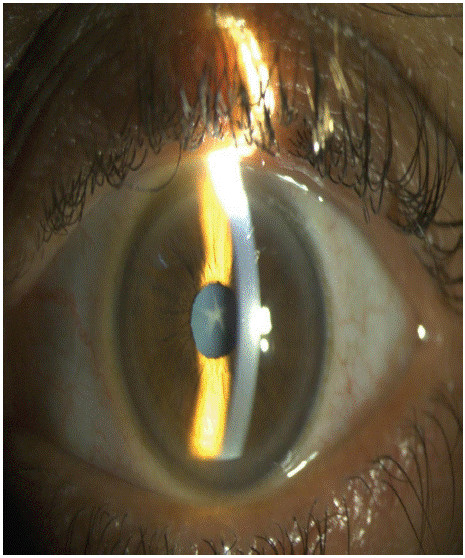
Clinical Image
Austin J Clin Ophthalmol. 2023; 10(4): 1150.
A Star-Shaped Cataract Induced by Chlorpromazine
Meryem Sefrioui*; Hamza Lazaar; Salma Hamid; Saad Genchekroun; Lalla Ouafa Cherkaoui
Department of Ophtalmology A, Specialty Hospital Rabat, University Mohamed V, Morocco
*Corresponding author: Meryem SefriouiMeryem Sefrioui, Department of Ophtalmology, Specialty Hospital, Mohamed V University, Rabat, Morocco.
Received: February 08, 2023 Accepted: March 24, 2023 Published: March 31, 2023
Clinical Image
Chlorpromazine is reported to cause damage to the ocular tissues consisting of fine granulations in the anterior subcapsular layers of the lens and in the posterior surface of the cornea.
Vision decline is not noted until advanced stages and patients commonly describe glare and halos. Monitoring cataract is recommended in patients on chlorpromazine for an early detection of this rare side effect that can eventually lead to a surgical intervention.
We report the case of a 35-year-old subject with a history of schizophrenia treated with chlorpromazine tablet 400 mg daily for 14 years, presenting with a blurred vision in the left eye. His vision was 8/10 in the left eye and 10/10 in the right eye using Snellen chart.

Figure 1:
Slit lamp examination found an anterior capsular cataract in the form of fine white granulations giving a star-like appearance in the visual axis without any corneal deposit.
Declaration of Interests
The authors declare that they are no conflicts of interest in relation to this article.